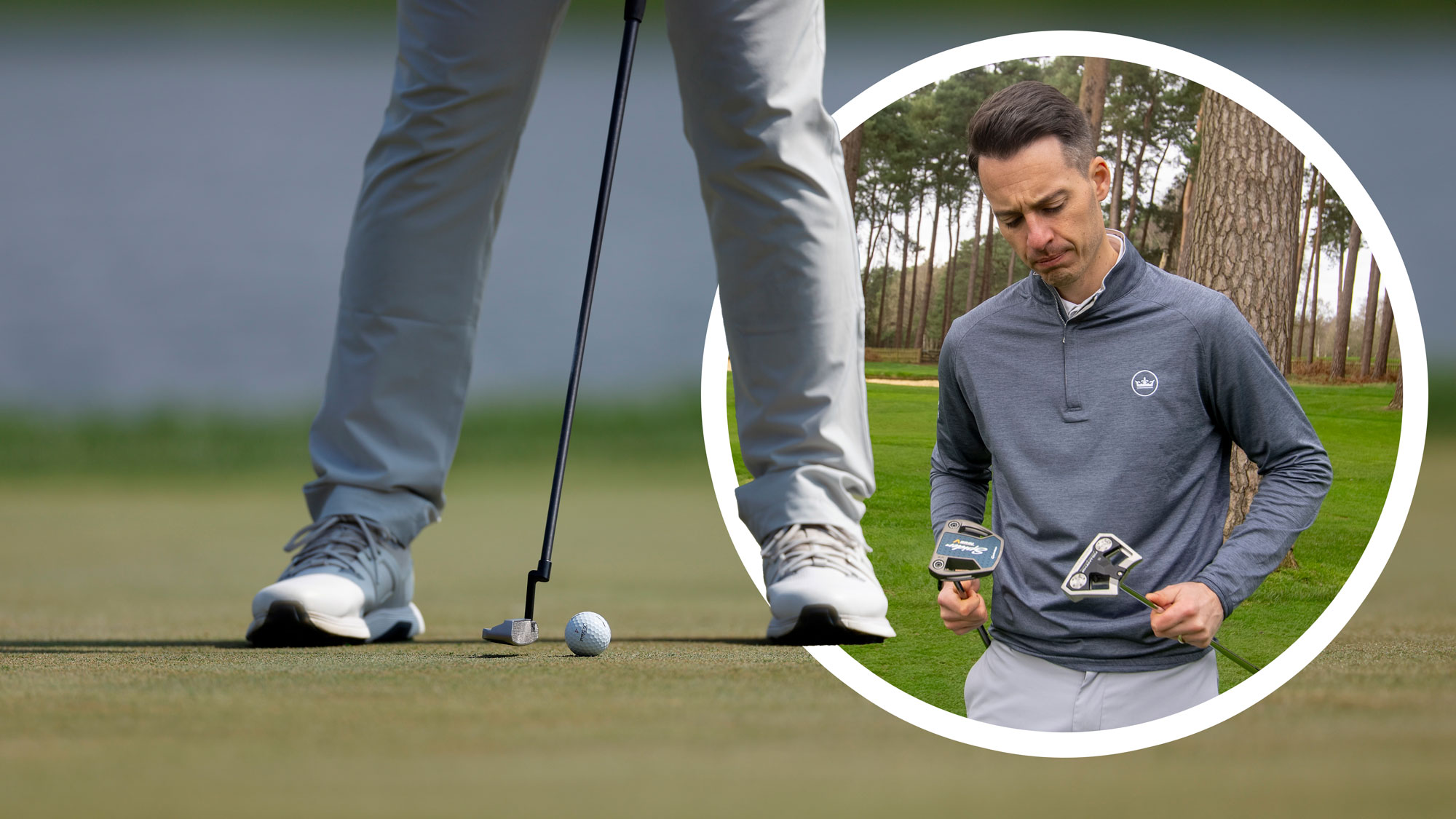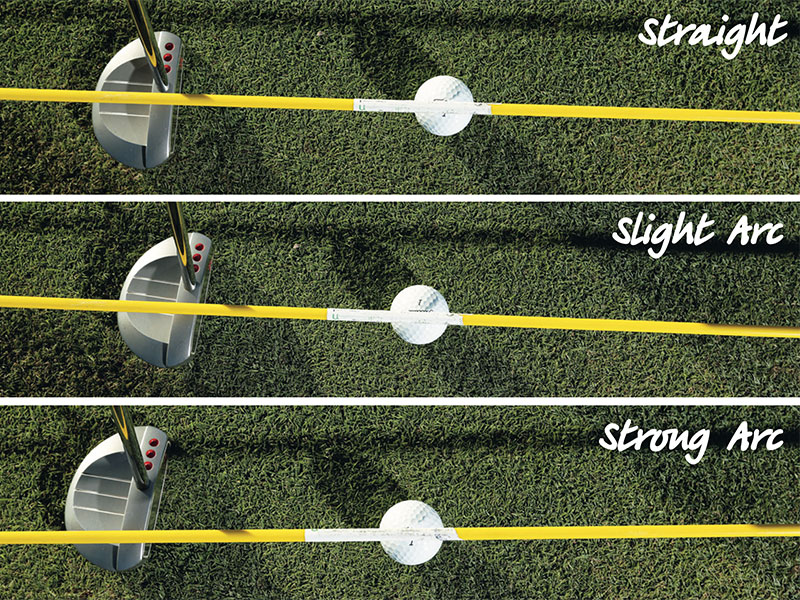Are You Using The Wrong Putter? Try This Gem Of A Putting Drill To Find Out...
This simple putting drill assesses your stroke to determine if you are using the wrong putter... and even helps you to find the right option to suit your game


Many amateur golfers feel lost on the putting greens, struggling to find the secret to unlocking their full potential in this crucial area of the game. It's all well and good buying a brand new putter, studying the best putting tips and testing out a range of putting drills, but if you don't choose the right flat stick for your game it could all add up to more misery and confusion.
In this article, Golf Monthly Top 50 Coach Gary Alliss shares a simple drill that will help you determine which type of putter is best for you, as well as sharing a few expert tips around fundamentals to boost your progress on the greens...

With more than 40 years experience in the game, Gary Alliss is one of the top golf coaches around. Gary began his PGA training at Trevose, where he became head professional in 1983. In 2005, he joined The Belfry, where he managed a team of 35 PGA professionals.
He's travelled the world several times over, working extensively in Slovakia, Ghana and Israel, helping amateur and professional golfers globally to improve their performances.
Putting Drill: The Simple Stroke Checker
Amateur golfers often make plenty of mistakes when choosing the right putter. Identifying your type of putting stroke will help you to work out the putter type best suited to your game. A great way to do this is to put two tee pegs in the ground about four feet apart and either balance an alignment stick on top of them, or tie a piece of string around them.
Line up with your putter underneath and make some practice putts. Pay attention to the position of the putter on the way back and through. It will be clear whether your stroke is straight back and through, a slight arc or a strong arc.
A player with a straight line stroke is best suited to a face-balanced putter; a slight arc is suited to a putter that is a little toe heavy (when balanced on the hand the toe will hang down a little) and those with a strong arc should have a putter where the face tilts down a considerable amount.

Try this drill out for yourself, it might just hold the answers to your putting woes...
Putting Fundamentals: What Next After Choosing The Correct Putter For You?
When you sensibly decide to spend some of your practice time on the putting green, you need to make sure that you get the most out of it. The following will help you to check that your putting fundamentals are all in order so that your technique can cope when you head out to the course.
Confidence in your technique will allow you to concentrate on line and length when it really matters. One common problem I see is when the backstroke is longer than the follow through, often causing deceleration and a lack of control.
Subscribe to the Golf Monthly newsletter to stay up to date with all the latest tour news, equipment news, reviews, head-to-heads and buyer’s guides from our team of experienced experts.
A simple and easy way to improve control is to ensure that your stroke back is shorter than your follow through. To work on this, place a tee peg just outside your right foot at address and a tee peg double that length outside your left foot.
Hit some putts making sure that you swing up to these tee pegs on the way back and through. This will give you the feeling of a very solid putting stroke, which will in turn help you control tour judgement of distance and find added consistency.

Even the best players invest time in putting practice... so you should too!
A bad habit that golfers of all standards can fall into is addressing the ball in the wrong position. If you notice the ball tends to jump off the putter face rather than starting to roll out quickly, it could be because the ball is positioned in the wrong place.
Ideally, you want to make contact with the ball with the putter slightly on the rise. You can help ensure this by positioning the ball at address in line with your left eye, or just slightly outside it.
You can check this by holding your putter down from your left eye when in the address position and checking that the ball lines up with it. From this position, the bottom of the arc of the putter will come just as it passes my sternum and will begin to rise as it makes contact with the ball. This will help to ensure the ball begins to roll smoothly almost immediately after it leaves the face of the putter.

Cam Smith is one of the greatest putters on the planet. Notice how he stays connected through the stroke, allowing him to roll it like a champion
One of the keys to putting is that the club is controlled by a simple rock of the shoulders, and not by a flick of the wrists or a separation of the arms and the body. In order to keep the arms, shoulders and wrists in unison, you should try practising with something tucked under both arms, such as an alignment stick or a club.
By simply rocking the shoulders the stick will stay in position and you will ensure that your arms don’t swing out of time, preventing all sorts of problems with distance control. Focus on the feeling of the arms and body remaining connected and you will strike the ball from the middle more consistently, and find much better control from all distances.
What Length Putter Do I Need?

Joe has worked in the golf industry for nearly 20 years in a variety of roles. After a successful amateur career being involved in England squads at every age group, Joe completed his PGA degree qualification in 2014 as one of the top ten graduates in his training year and subsequently went on to become Head PGA Professional at Ryder Cup venue The Celtic Manor Resort.
Equipment has always been a huge passion of Joe’s, and during his time at Celtic Manor, he headed up the National Fitting Centres for both Titleist and Taylormade.
"If a putter is too short it may result in a crouched or hunched posture and similarly, too long may result in a player standing too upright or even too far from the ball to compensate."
Joe Ferguson, Golf Monthly Staff Writer And Gear Expert
There are a couple of considerations to determine a suitable length of putter, the first of which is posture. Generally speaking with "orthodox" putting, a comfortable posture with a slight bend from the hips is preferable.
The second consideration for me is eye line relative to the golf ball. As a starting point it is generally accepted that having your eyes pretty close to directly vertically above the ball is beneficial in terms of seeing the line clearly, although many putting coaches believe that the exact optimal positioning can vary depending on whether a player is left or right eye dominant. Selecting a putter length that allows you to position your eyes well is critical to consistency on the greens.

Baz joined Golf Monthly in January 2024, and now leads the instruction section across all platforms - including print and digital. Working closely with Golf Monthly's Top 50 Coaches, he aims to curate and share useful tips on every aspect of the game - helping amateurs of all abilities to play better golf. Baz also contributes weekly to the features section, sharing his thoughts on the game we love and the topics that matter most. A member at Sand Moor Golf Club in Leeds, he looks forward to getting out on the course at least once a week in the pursuit of a respectable handicap.
Baz is currently playing:
Driver: Benross Delta XT
3-Wood: Benross Delta XT
Hybrid: TaylorMade Stealth 4 Hybrid
Irons: Benross Delta XT 5-PW
Wedges: TaylorMade RAC 60, Callaway Jaws MD5 54
Putter: TaylorMade Spider Tour
- Gary AllissTop 50 Coach
- Joe FergusonStaff Writer